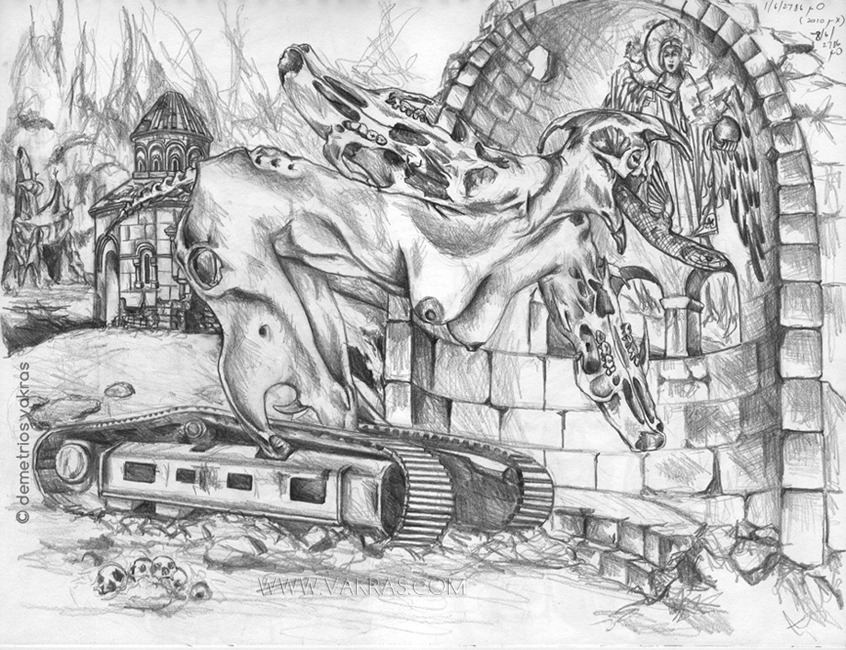

|
 |
In this version I deliberately chose the elements for their symbolic significance and emended its title to, Flightless Kadmean Victory: contra Bosch.
Flightless Kadmean Victory: contra Bosch was drawn onto canvas and ready for painting in late 2010. In it a similar figure is situated within the ruins of Byzantine and Armenian structures. Though the elements from Bosch, and those elements inspired by Bosch, were an incidental solution which provided a background for my figure in 1997, the elements inspired by Bosch in this subsequent version are deliberately incorporated into it. In his paintings such as The Garden of Earthly Delights, and Haywain, Bosch used motifs from Italian renaissance art (which are unacknowledged by contemporary scholarship) to condemn as evil the western European awakening from what we today call the "Dark Ages". Bosch propounds a fundamentalist Catholic condemnation of the science and philosophy of the Greeks which, preserved by Byzantium, was being transmitted to the west. "Knowledge" for the fundamentalist Catholic Bosch, was "superbia" and therefore evil. Had Bosch had his way, Holland would have rejected the Renaissance and would have been Europe's medieval Afghanistan. Hence my initial incongruous, accidental, juxtapositions will in this version be deliberate, specifically chosen for their symbolic significance. The victory of secularism and science over the superstition of Christian beliefs (Catholic fundamentalism) could still be a Kadmean triumph if the uncritical appeasement of the superstition of Islam by the west continues to proceed. Bosch used motifs from Renaissance Italian painting against themselves. The triumphal carriages of "pagan" deities were turned by Bosch into a haywain. The geological formations which appeared in the works of the Italians were incorporated by Bosch into his own works and were placed in the stage before which the Judaic "fall of man" is played out. In the drawing for Flightless Kadmean Victory: contra Bosch, above, I am using these same ideas against Bosch. My "Victory" is integrated into a "triumphal carriage", which is drawn by a winged snake coming from within my "victory". The snake for the Greeks was a benevolent protector, a force of good, and possessor of wisdom. My victory is traversing through a landscape scarred and in ruins which spreads out before the Italian geological form (top left). This work is explained in Post-Humanist Transhumanist available on Amazon as a kindle or print edition. |